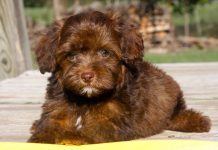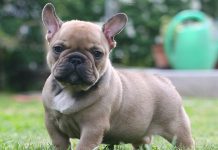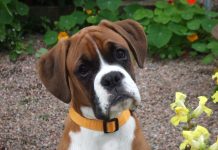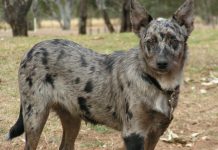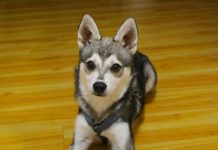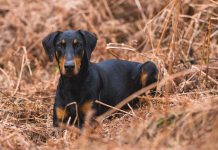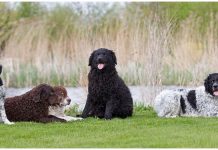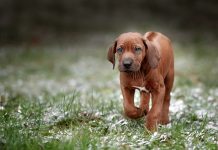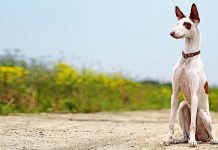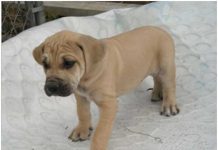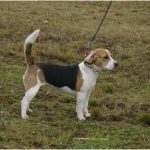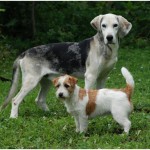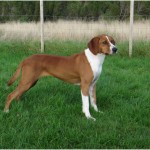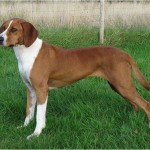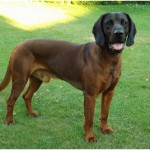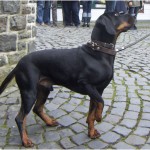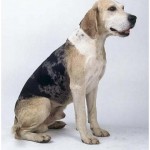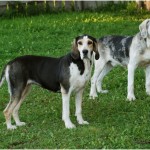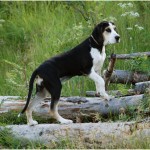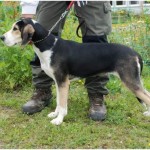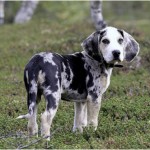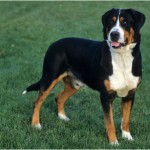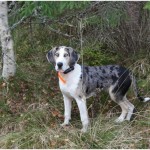This breed is getting popular in the European and Middle East countries and it is used as a multipurpose dog starting from guarding the house to gundog. It is quite friendly as a house hold pet but it hopes for special treatment from its owner.
History and Health:
- History - This dog was originally developed by a Norwegian breeder Wilhelm Dunker who crossed the breeds Russian Harlequin Hound and Norwegian scent hounds with an intention to produce dependable hound dogs. This dog became popular in the mid-19th century and from then onwards it never looked back and became a favorite pet for many. He developed this breed with a sole aim to hunt rabbits not by its vision capabilities but by the smelling (scent) capabilities. It is more popular outside than in its homeland.
- Health - Hip dysplasia rarely occurs in this breed. Deafness is a significant problem in this breed as more than 75% dogs suffer from unilateral or bilateral deafness. No other significant physical diseases were observed in this breed till now.
Temperament & Personality :
- Personality - It is very friendly with its breeder or instructor. It is highly energetic but stays calm. Its free spirited nature is rare to see in other dog breeds.
- Activity Requirements - Dunker breed requires lot of activity. It is not a potato couch type of dog and forty five minutes of brisk walk is more than sufficient to meet the exercise requirements of this breed.
- Trainability - This dog is somewhat difficult to train if you want to participate in dog agility or dog obedience tests; this breed is not for you. Trainers also face some difficulties in training as they unwillingly obey its breeder and are stubborn and ignorant.
- Behavioral Traits - If you want to live in peaceful conditions, giving proper food and workouts is necessary. If both these things are perfect, this can stay calm indoors otherwise you need to see the violent angle of this dog which is really irritating (especially if you are a breeder).
Dunker Appearance & Grooming
- Appearance - Though it appears small, it is of medium size dog. The appearance is rectangular, normally more in length than its height. With its dark eyes and wide ears, the face of this dog looks very beautiful.
- Size and Weight - The size and weight of this dog varies for male and female. Usually male dogs grow a bit higher and their range is in between 50-55cms and whereas female dog grows in the range of 47-52cms. They usually weigh between 11-18kgs.
- Coat & Color - The coat of this breed is dense, hard and straight. The coat is neither short nor long but of medium length. It is dense, straight and short.
- Grooming - Ears are long and prone to infections. It is better to groom this dog at least once in three months to get the best look. In the opinion of breeders, it is easy to comb this dog but the cleaning requires lot more patience.
- Body Type - Its teeth are separated by equal size and it is known for its scissors bite. It has a deep neck which is attached to strong back with a top line. With slightly tucked up chest and muscular thighs, this breed looks perfect for hunting.
Dunker Characteristics
- This dog is perfect for peasants as it is really good at hunting.
- Because of its excessive barking, it is not that much suitable for apartment life.
- It loves to play in the farm yard and if you have a farm, fencing is necessary as they tend to chase and attack (even kills sometimes) other small pets.
- With strict instructions and by bringing up together this dog can mingle with other pets.
- It is not that much suitable for families who have small kids.
- This dog litter size is 3-7 puppies.
- Not at all suitable for families who are allergic to air borne infections.
- This breed is recognized by FCI, UKC and by AKC.
- Indoor environment is not at all suitable for this dog and it can irritate you if you keep your dog inside your home all the time.
- It is better to have some training experience before opting for this breed.
- Early socialization is necessary of this breed.
- It sheds heavily and throughout the year.
- Authoritative nature of owners can control this breed very much.
Tasty Tidbits :
Though it is good at hunting, it is not that much quick. One can improve the scent detection skills of this breed by giving proper training. This dog is rarely seen in Norway even though it was developed there. In the European countries and USA, this breed is so popular and the popularity and absolute numbers are increasing constantly.
Images, Pics, Photos and Pictures of Dunker :
Care :
Normal care is enough and professional medical attention is not really necessary. As this is a cross breed between two top class breeds, the health problems associated with it are very less and with regular exercises one can easily improve its immunity. One must be always cautious while handling this pet as it is known for becoming aggressive suddenly.
Feeding :
It likes non vegetarian food items like anything and one must note that giving non-vegetarian food items will surely make it obese. It is better to opt for quality dog foods which are easily available in market at cheaper prices. Two cups of food is more than sufficient per day and it is better to serve in two parts.
Dunker Information And Facts
- The original name of this dog is Dunker.
- It is popularly known as the Norwegian Hound in some parts of the world.
- As the official name suggests this dog originally belongs to Norway region.
- When classified based on size, this dog breed comes in medium size type category.
- The life span of this dog varies between 10-11 years.
- It belongs to Scenthound breed group as per UKC classifications.
- It is obedient, energetic and high spirited.
- Its height statistics varies from 20-22 inches in case of males.
- In case of females, the height statistics are in the range of 17-20inches.
- It generally weighs between 16-22 kg.
- Most preferred colors in this breed are black or blue with white markings and/or fawn markings.
- You must have $1700-2500 in your pocket to get this breed.
Also Read: Unlock Opportunities: Learn How to Apply for Bank of America Credit Card



